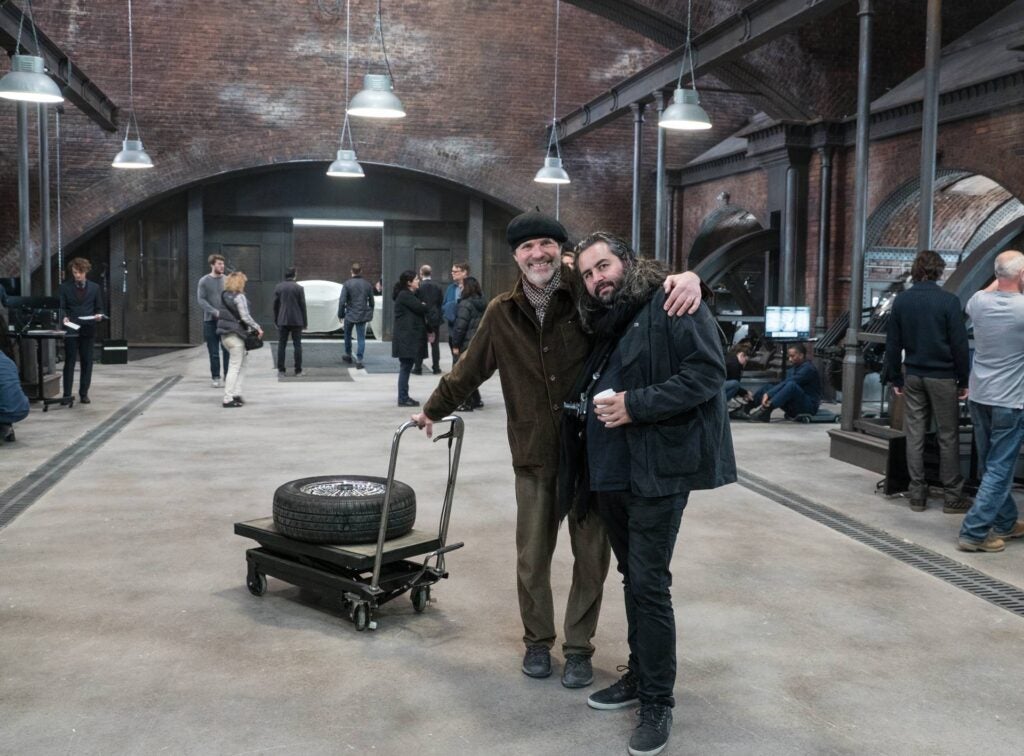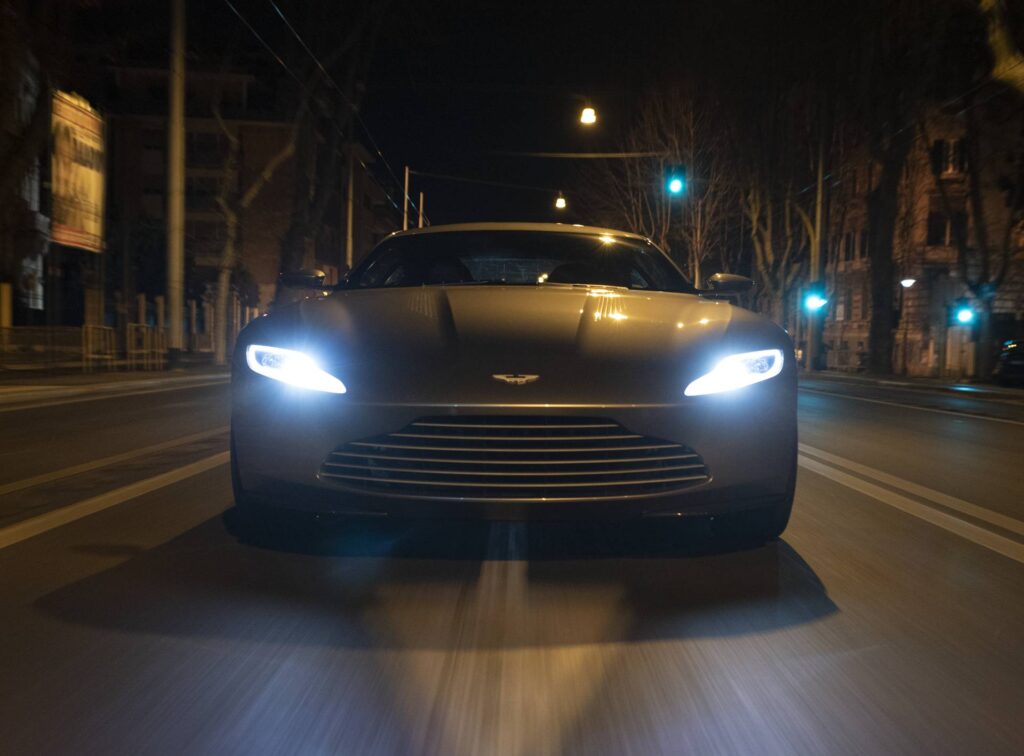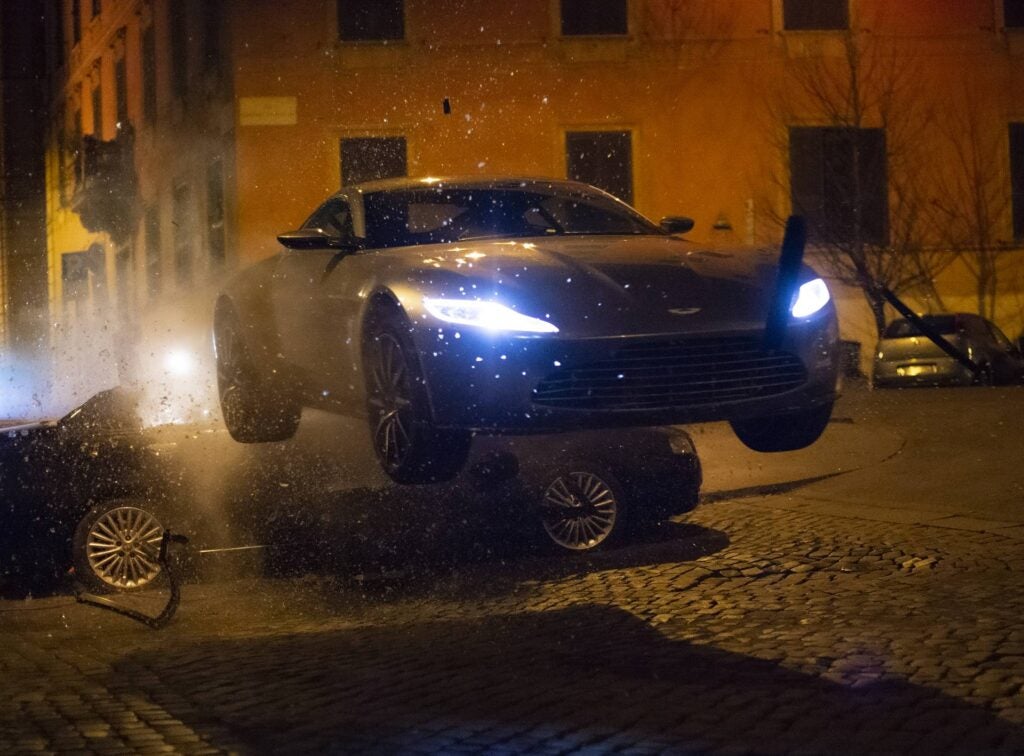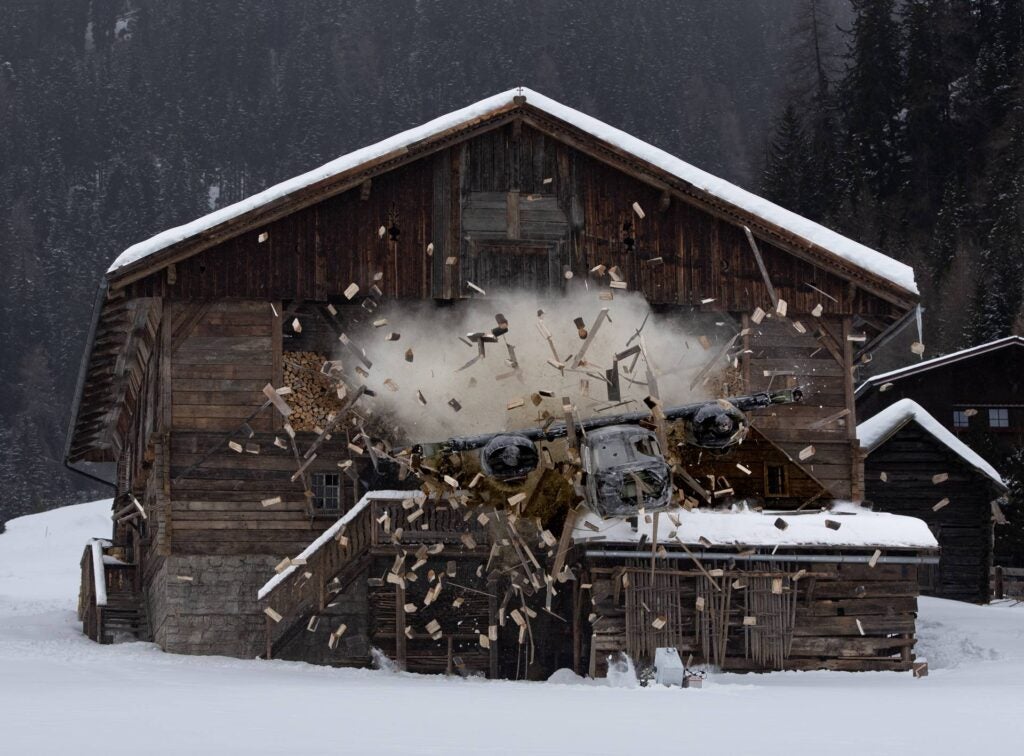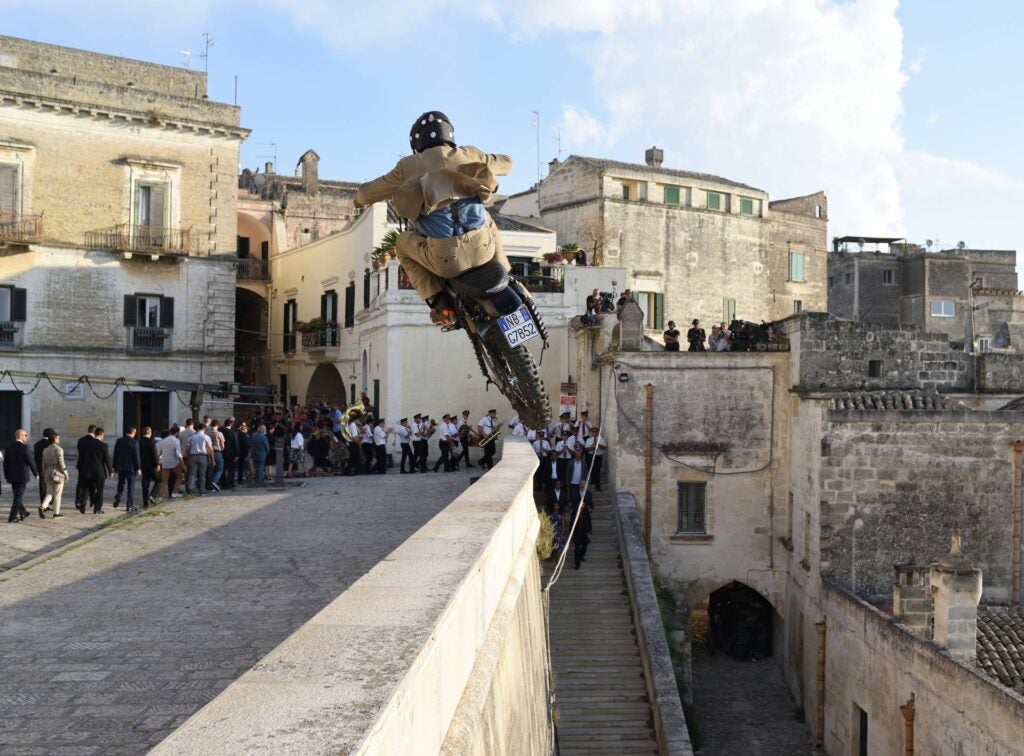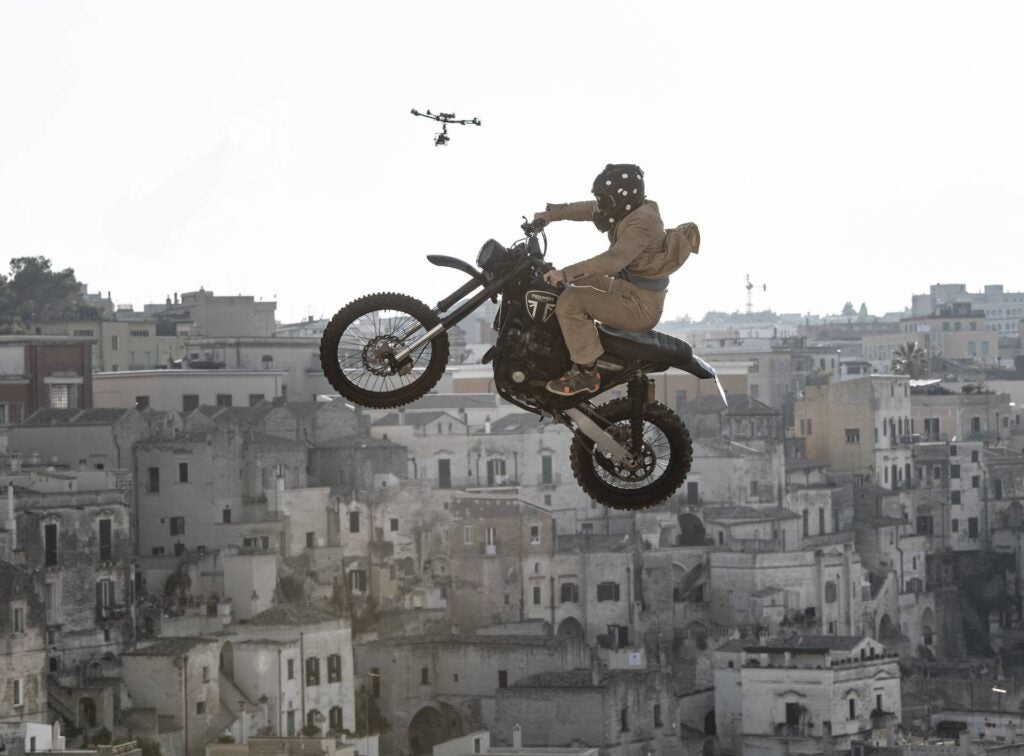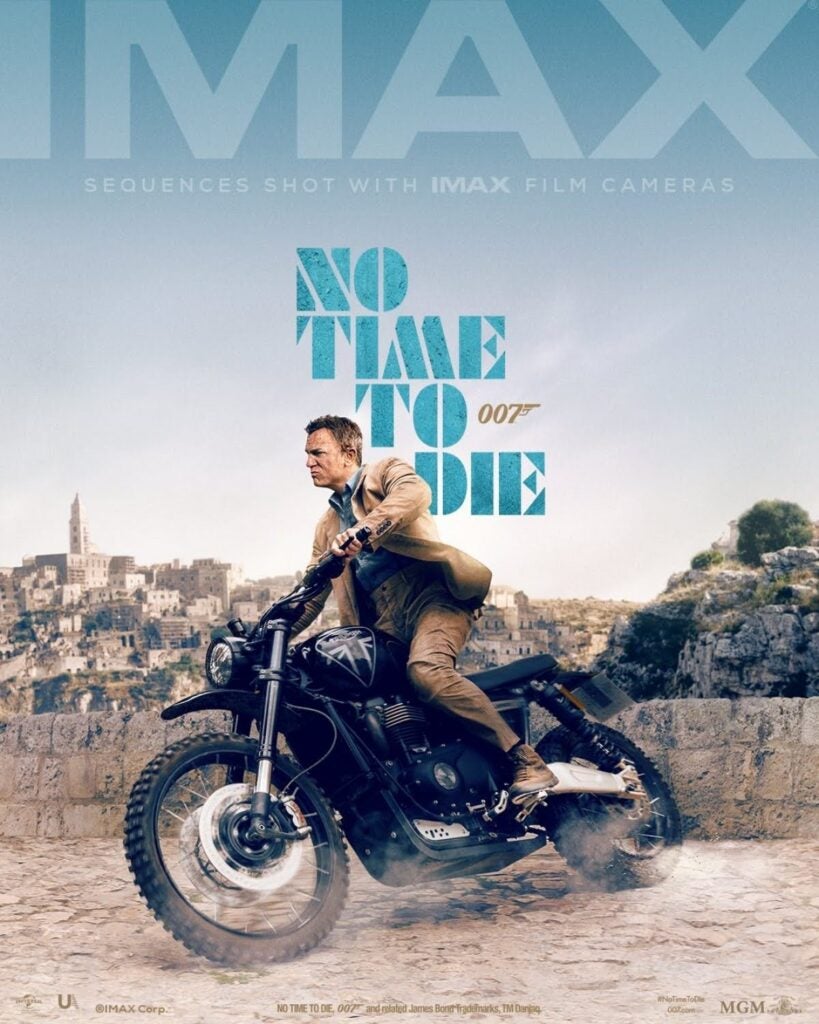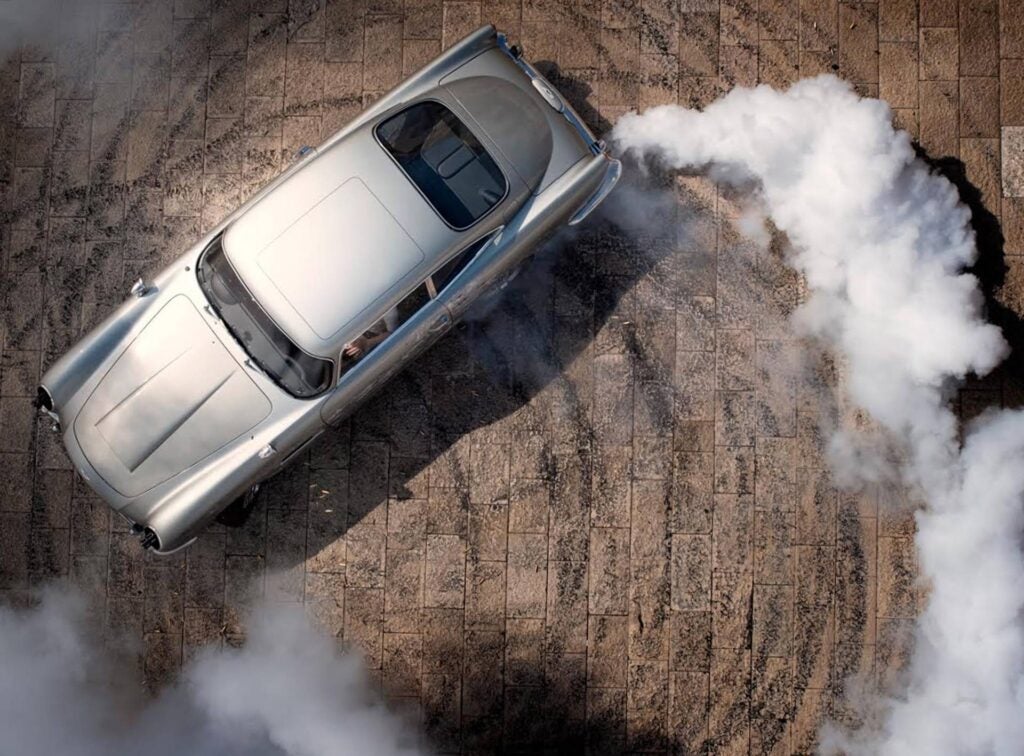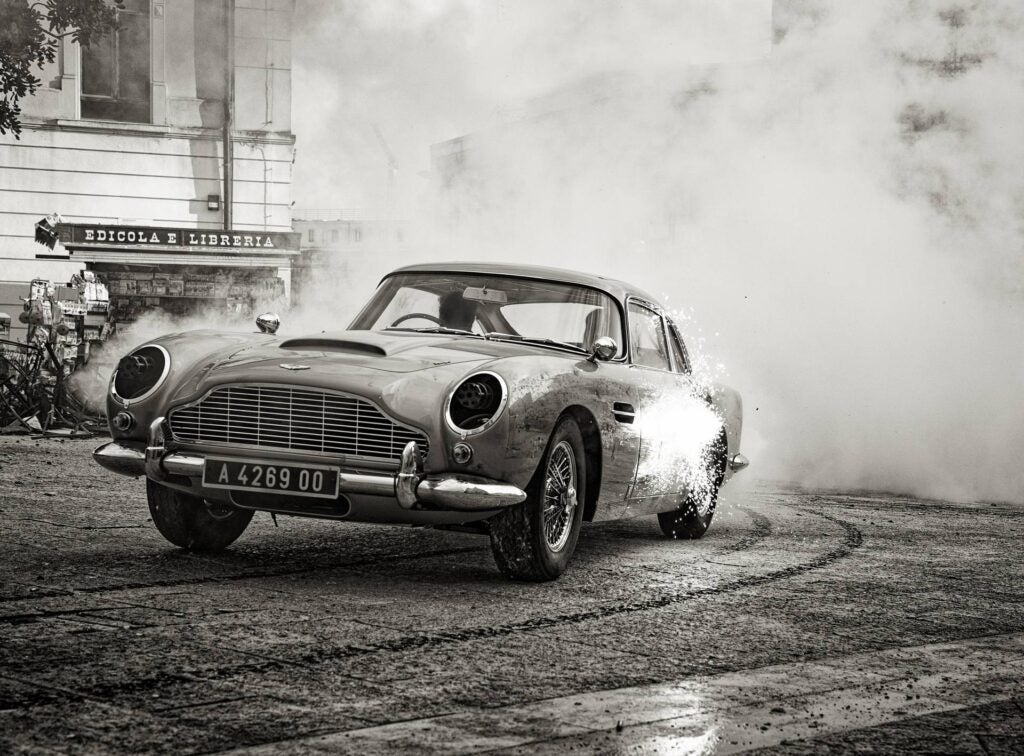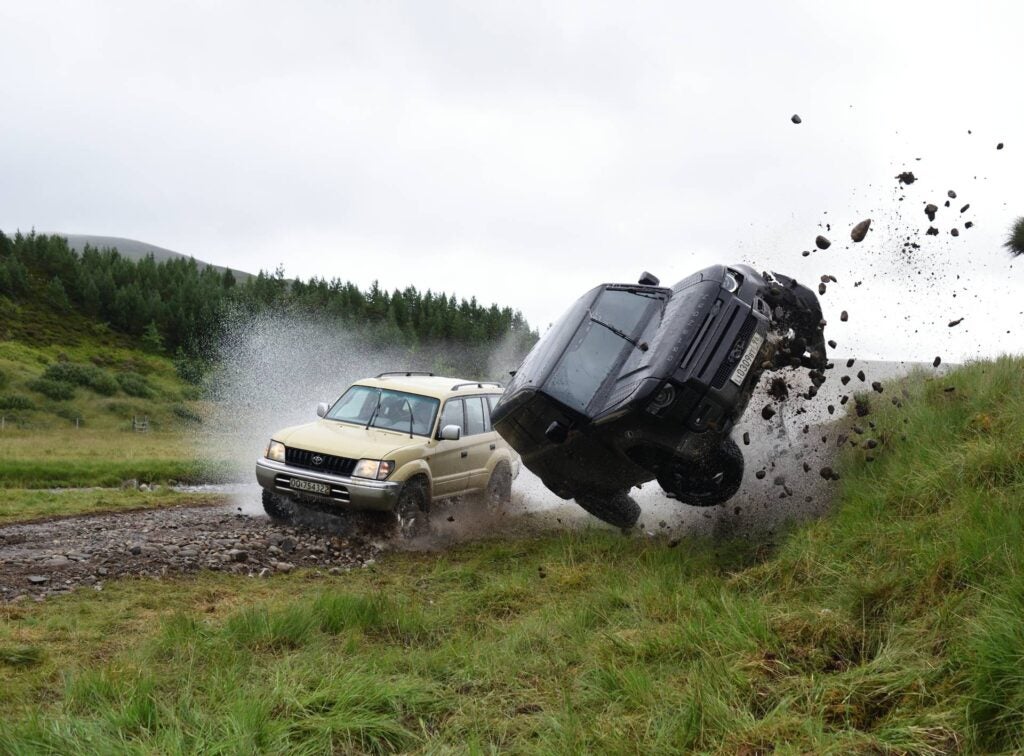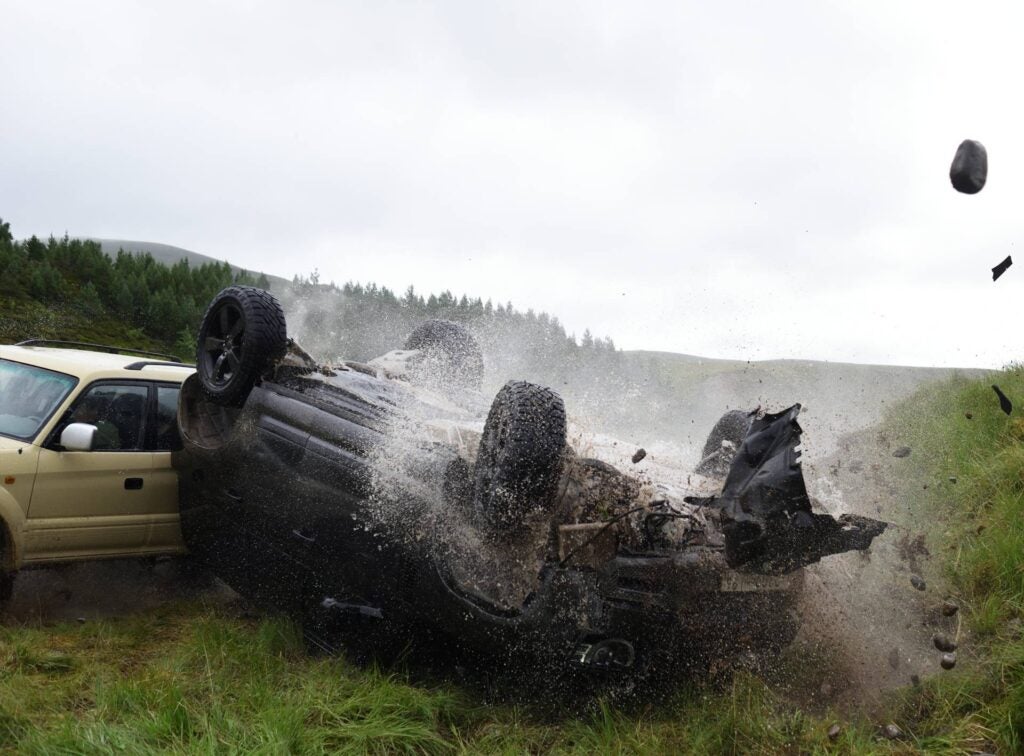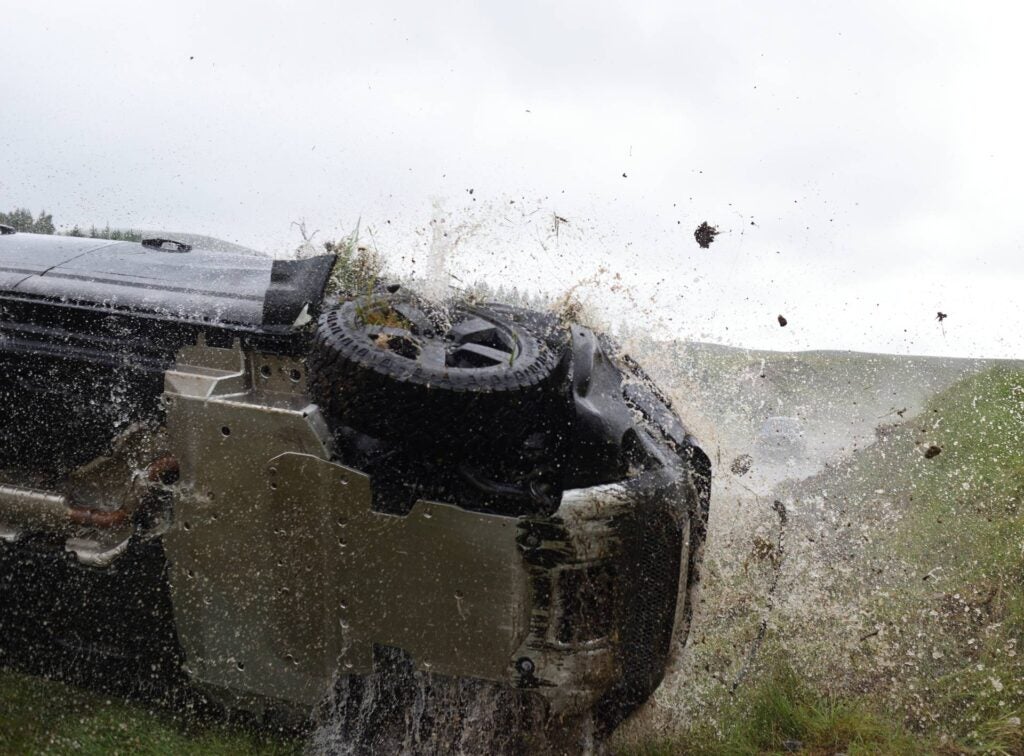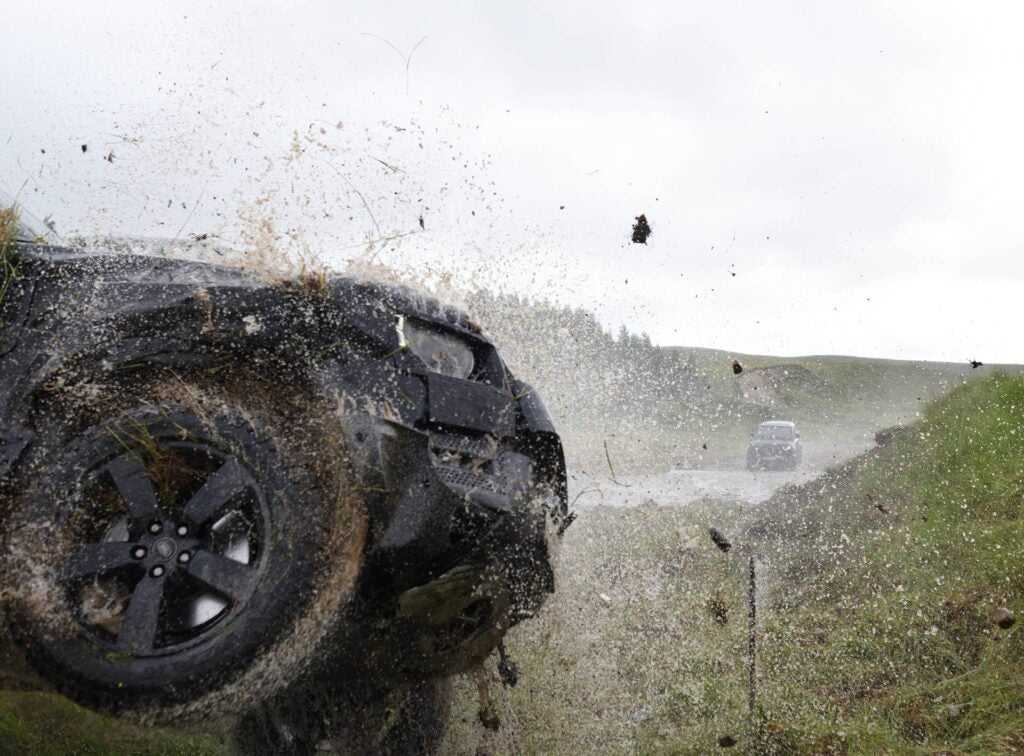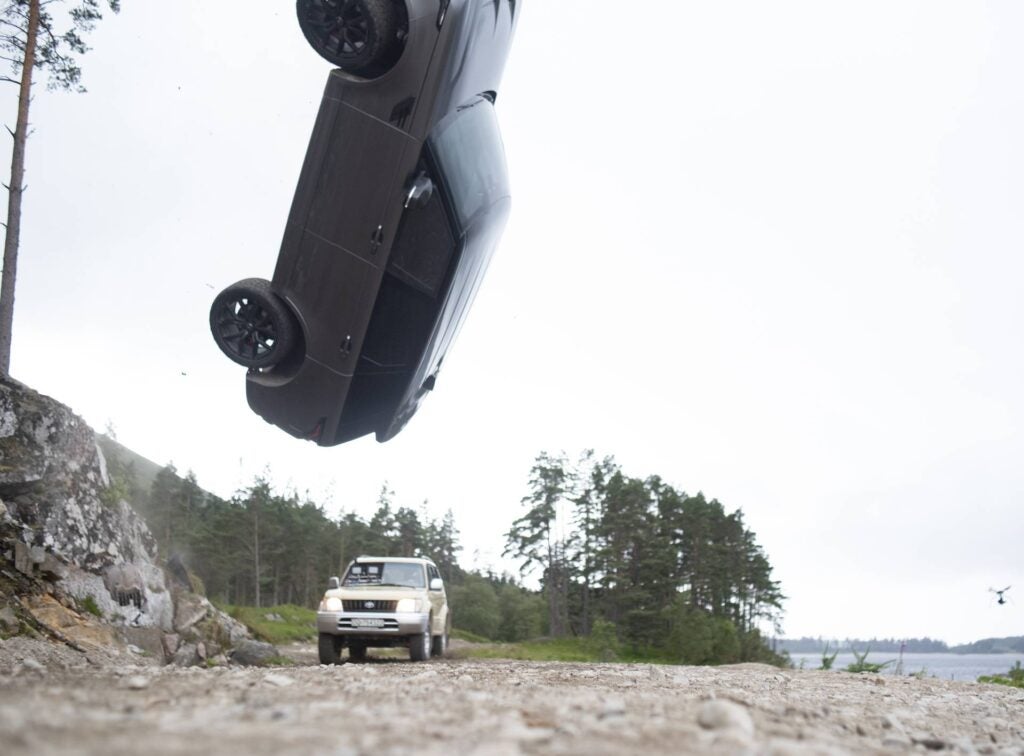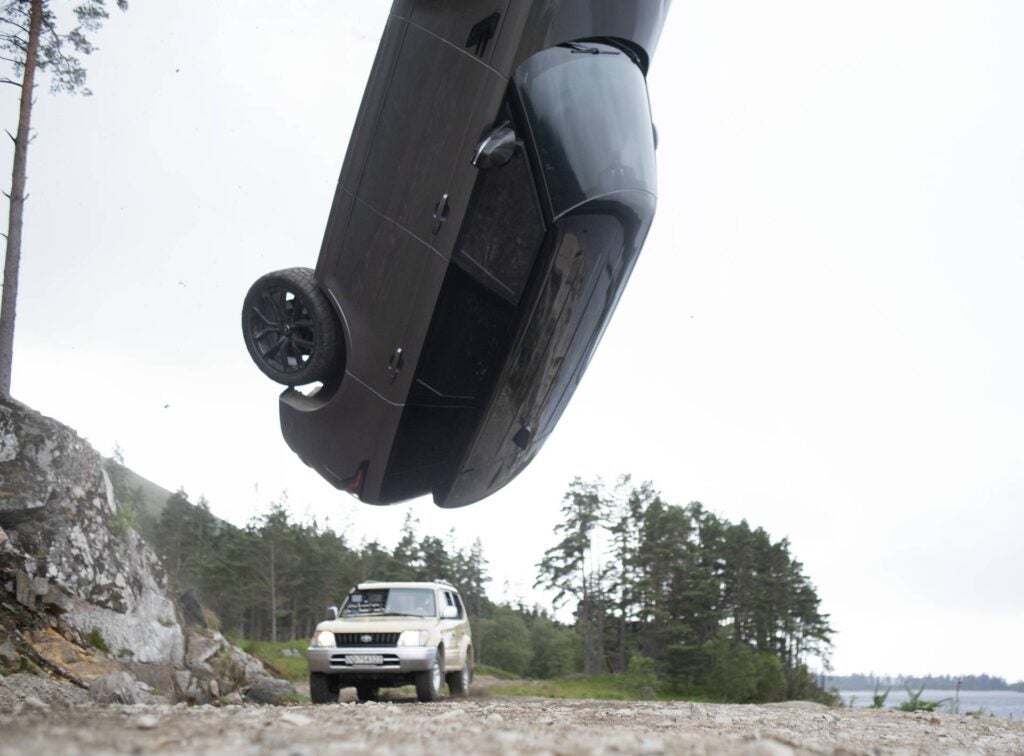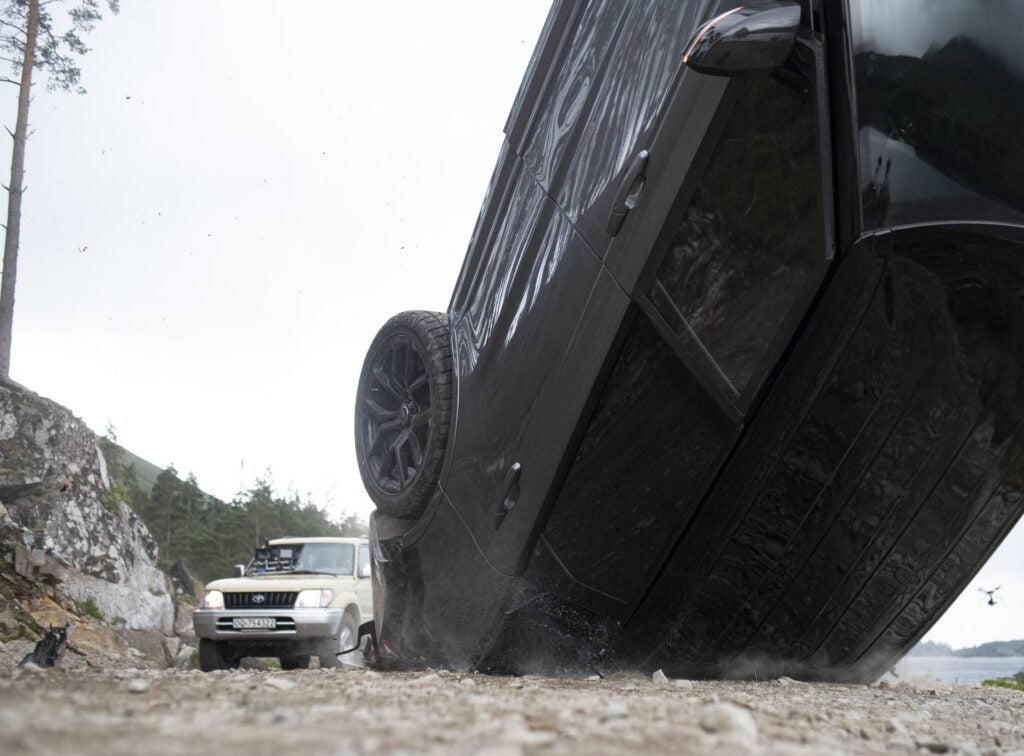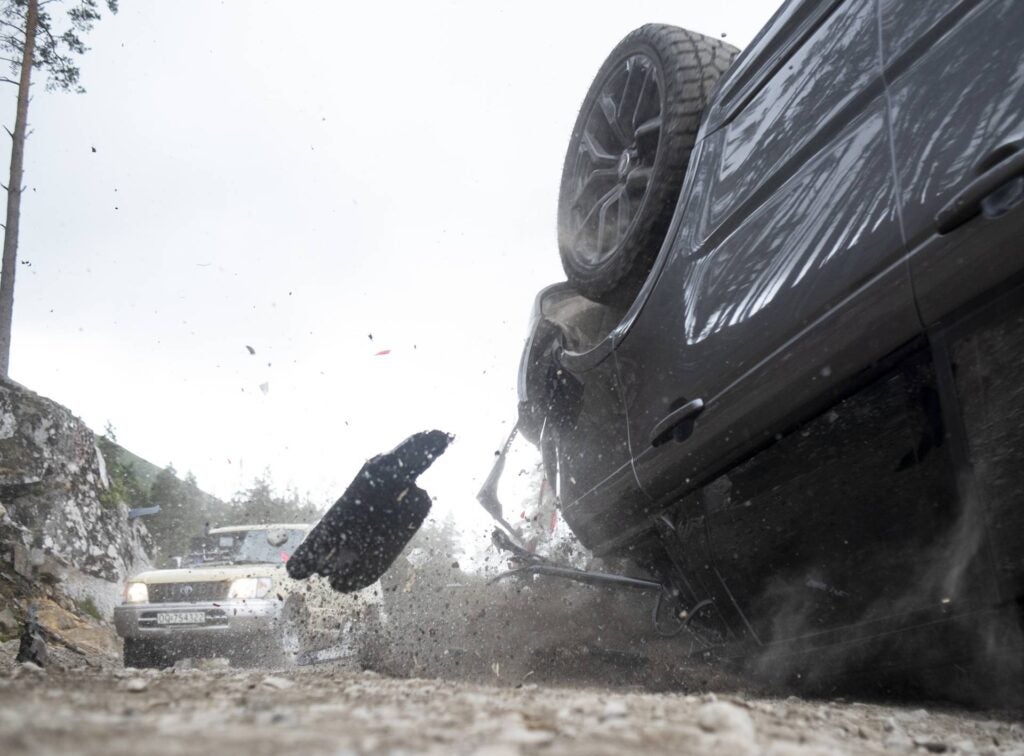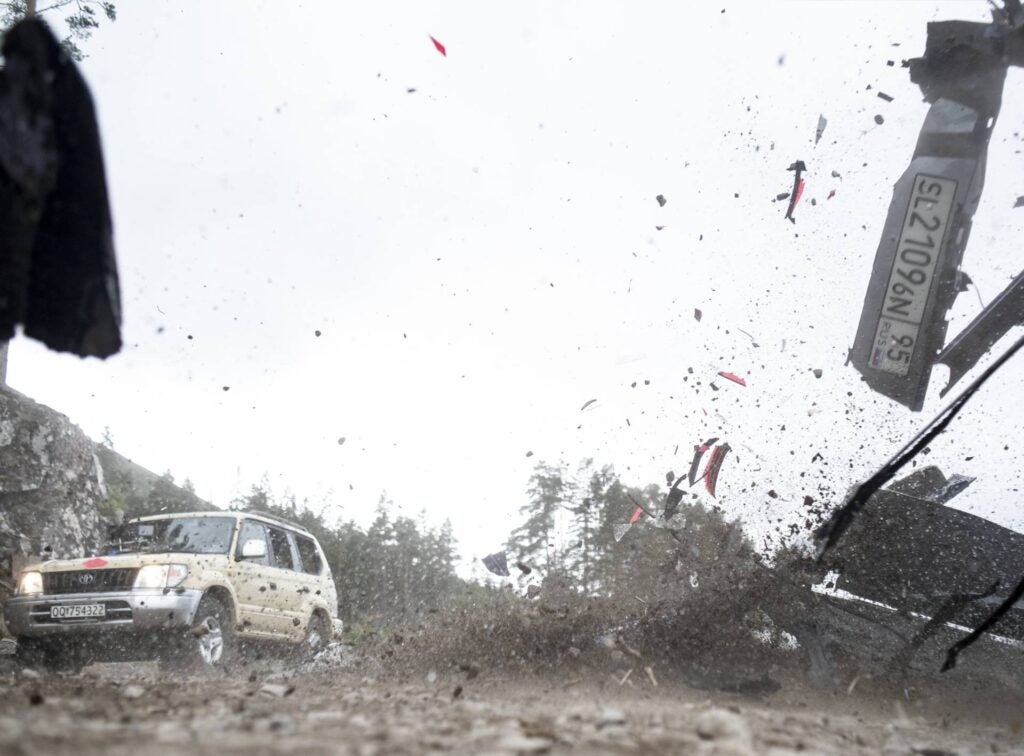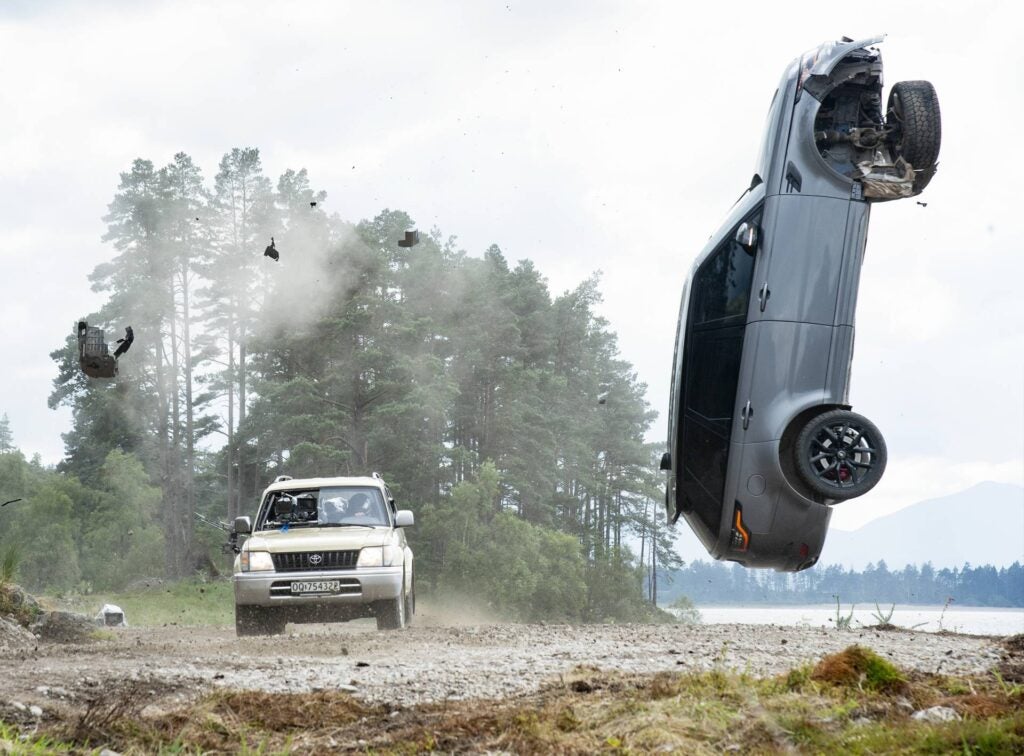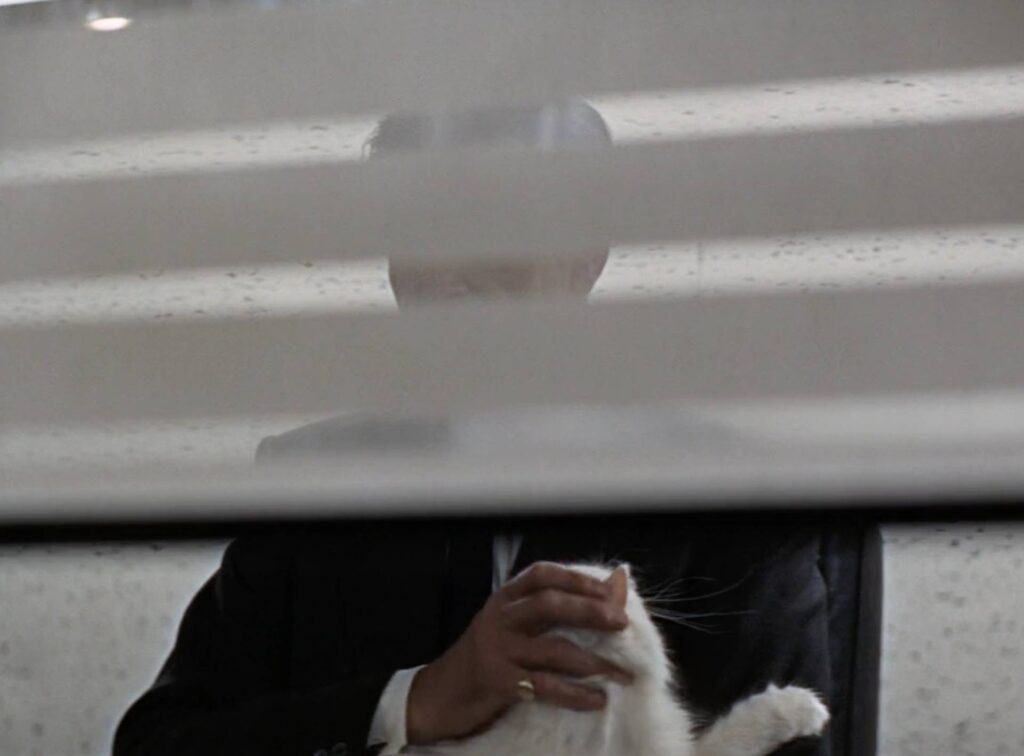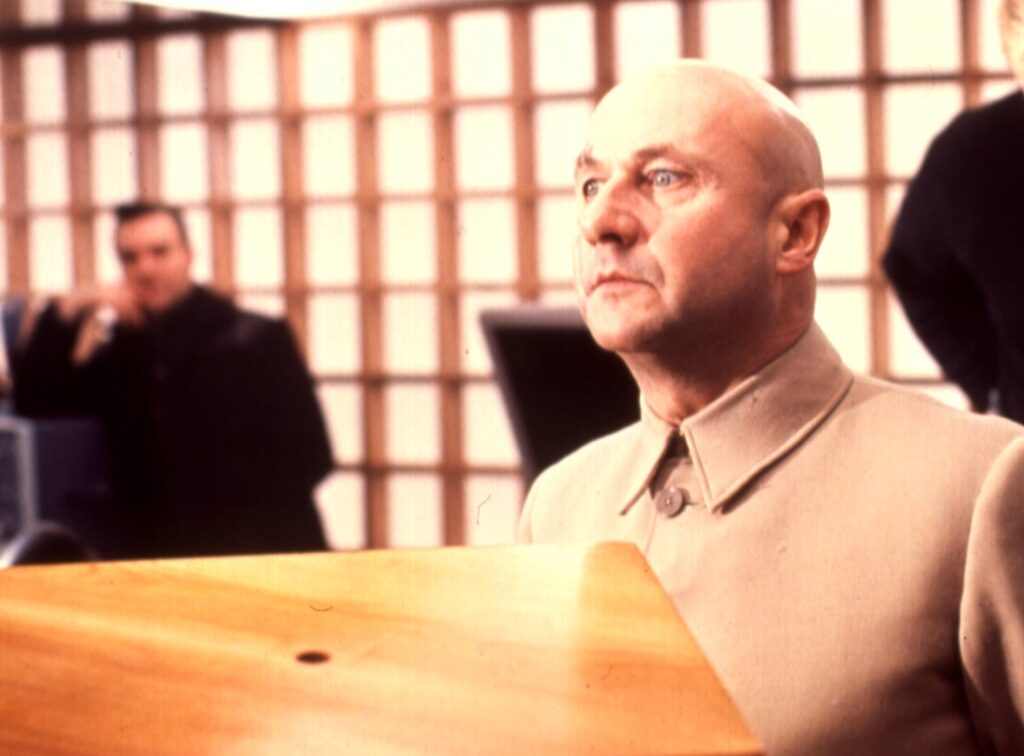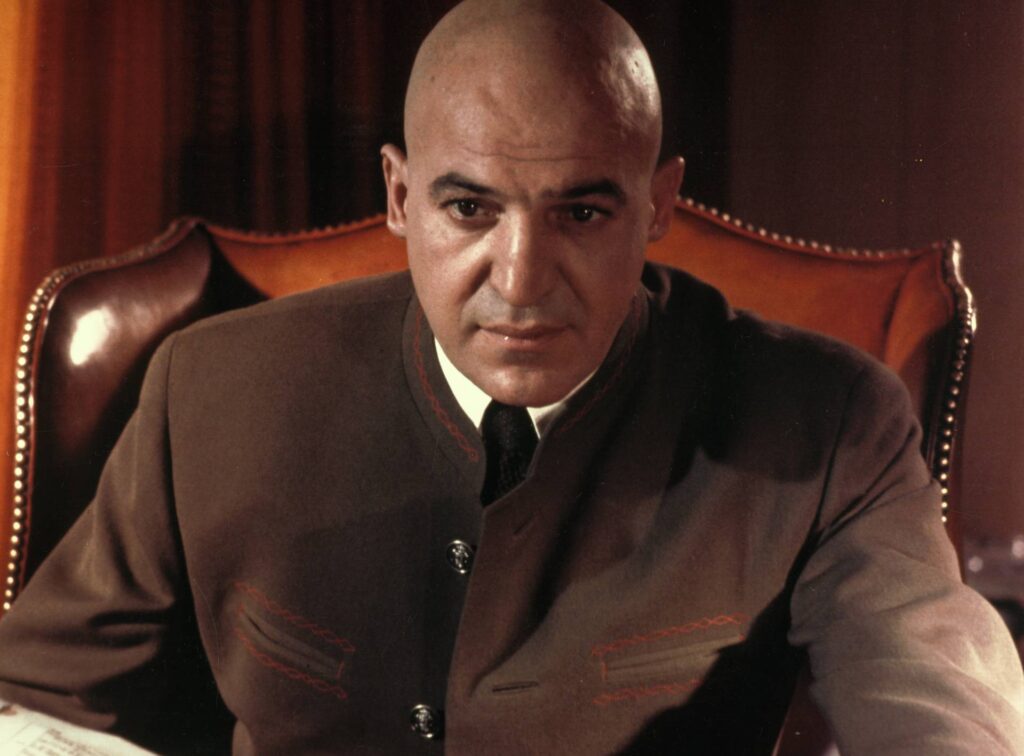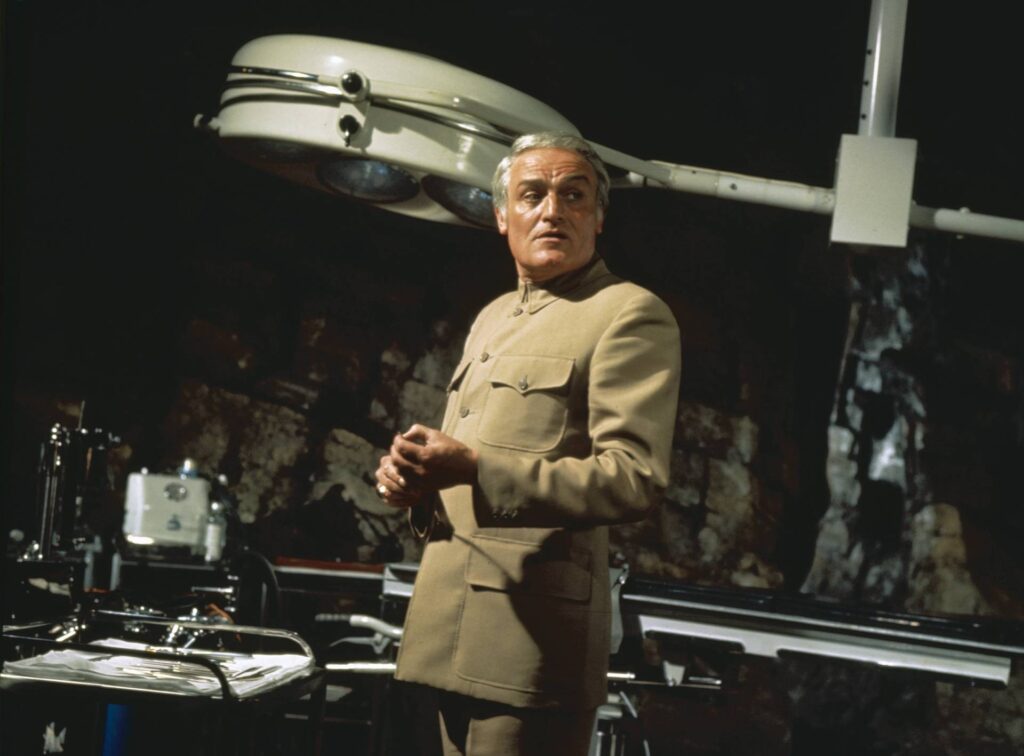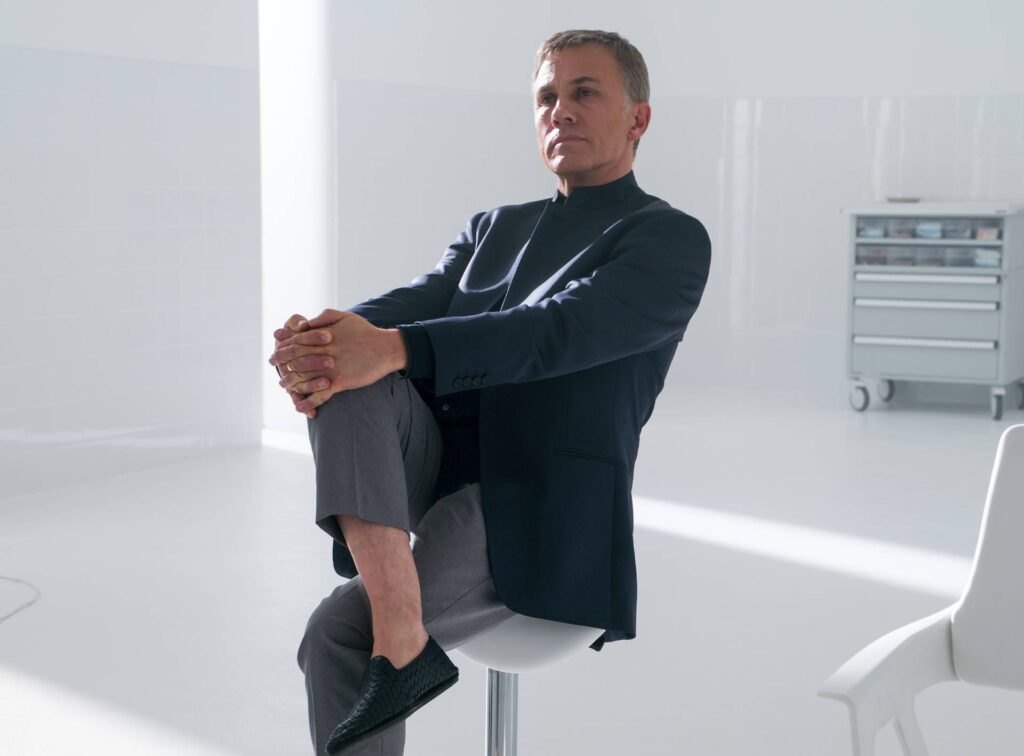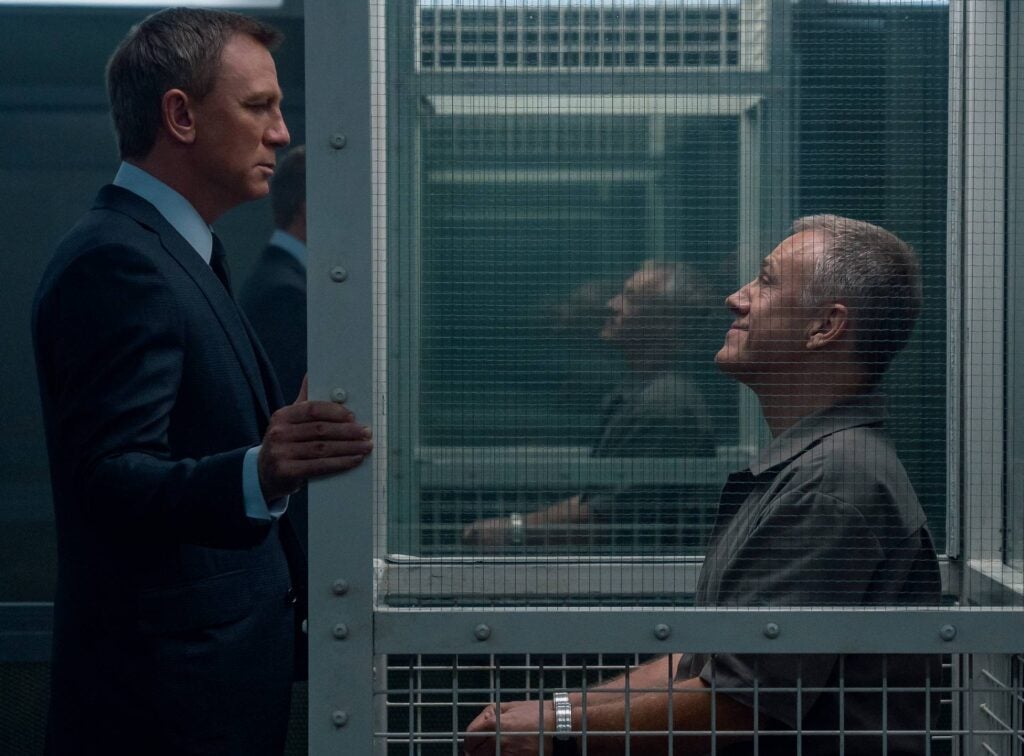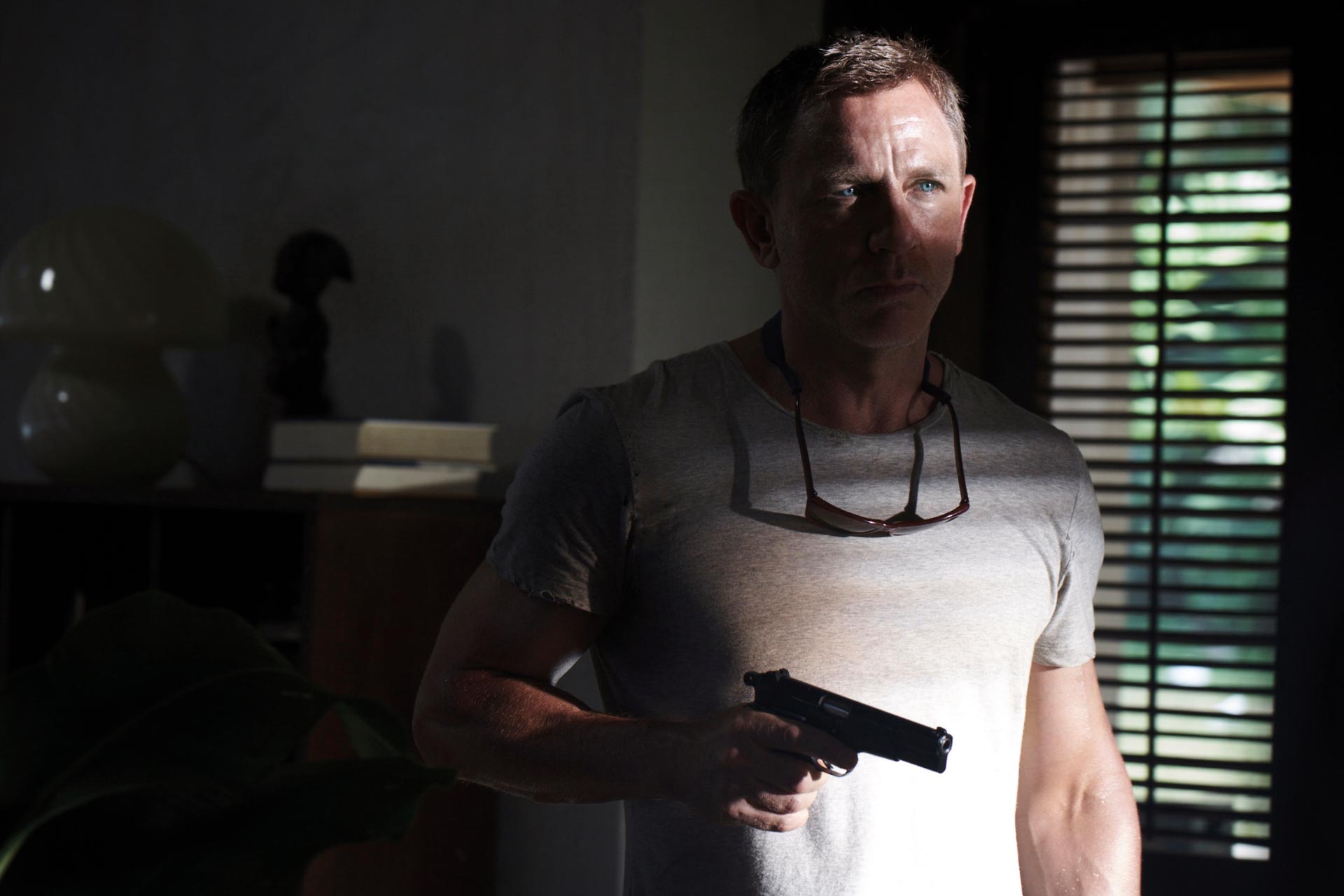“It’s a very rich playground for a cinematographer to play around in,” says Spectre cinematographer Hoyte van Hoytema about working in the 007 universe. “The producers are interested in creating something that is genuinely to be enjoyed on a big screen. It’s an adventure. You’re taken through different countries, through different environments. It’s very much art on a bigger palette.”
Van Hoytema had never worked with director Sam Mendes prior to Spectre. The pair formed an instant rapport.
“You start talking, you click, and feel that you can maybe do something interesting together,” he says. “If you look at all the films Sam did before, they were always amazingly shot which is not only thanks to hiring a great DP, but also having a very specific vision as a director plus an incredible sensitivity for visual language. So, when I started talking to him about Spectre, he was very much interested in talking about art, painting and light as an emotional vehicle to tell a story.”
A lifelong fan of the series, van Hoytema relished every moment of his 007 adventure. “Making a Bond film almost makes you feel like you’re in a Bond film,” he laughs. “You’re always energised. You get to a hotel, you go out to dinner somewhere, and then in the morning you’re out in the field. Your whole landscape has changed but it’s important because you’re also trying to give the audience that experience of the world.”
Yet it wasn’t just stepping into Bond’s shoes that excited van Hoytema. It was also the freedom to experiment and create on the grandest scale, a remit that was passed down from the very top. “Michael and Barbara are two of my favourite producers of all time. They told me we’ll get you what you need, that is our job. But you have to come up with a spectacle. Very early on, we were instructed to not worry too much about the practical side of things. That is a very interesting place to start because Sam started to dream up these crazy shots. Very often you have producers that will ask you at a very early stage to be pragmatic because, if you’re not pragmatic, things might start to cost more. But Barbara and Michael’s assignment was very clear: dream it up, and then we figure out how we can do this.” And Spectre begins with perhaps the most ambitious, audacious opening to any 007 film ever….
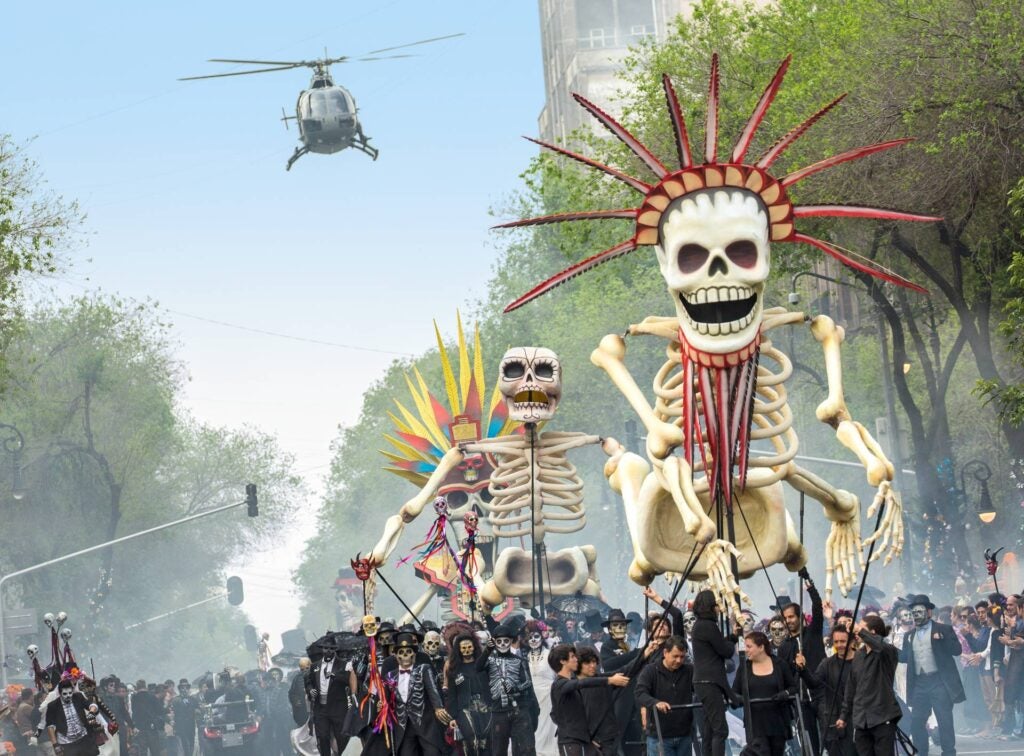
MEXICO
Spectre opens with James Bond (Daniel Craig) and Estrella (Stephanie Sigman) strolling through the Day of the Dead parade, a riot of sound and colour held annually in Mexico City. The first five minutes of the sequence are portrayed as one continuous tracking shot.
“The idea to do it in one shot was very much Sam’s. He thought it’d be very interesting to get into the film in a real-time experience. You’re with Bond step by step. There’s no clever editing that moves things forwards or backwards but you are getting to experience this amazing atmosphere in real time. I think it became a very exciting one-shot take.”
In reality, the shot was a series of four shots meticulously planned out and edited together by Lee Smith to look like one seamless camera move.
“Once we were doing it, the solutions we came up with might look crazy or ridiculous, but step by step, we figured it out. There are some sneaky stitches (edits) in there. It was a total technical puzzle. It’s a sequence that is shot in Mexico City, but also in London. The camera starts in Mexico City, goes into a hotel lobby, then into an elevator and then we are Pinewood Studios. We go through Pinewood Studios, and then out into Mexico City again when Bond walks across the roof, and back into Pinewood at the end (for the exploding hotel). It required a lot of ingenious thinking from my grips. They came up with these incredible installations and ways to shoot it. My camera operator Lucas Bieland was pivotal in making this all work, so there were a lot of minds, a lot of thoughts and a lot of enthusiasm to bring this to life.”
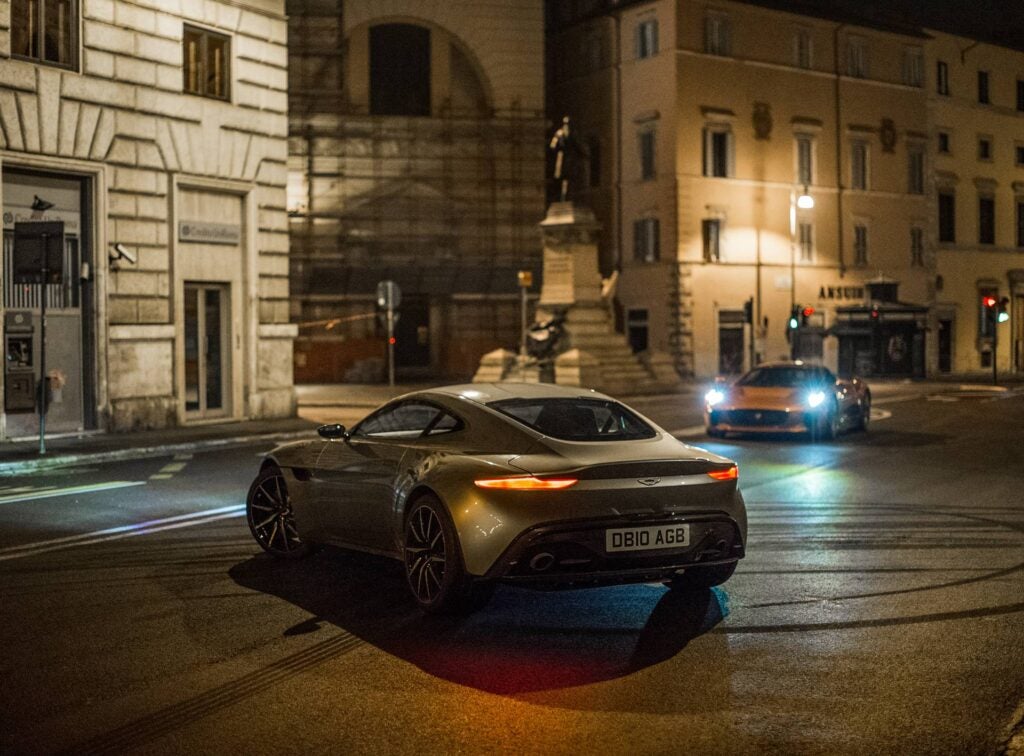
ROME
After Mexico, Bond heads to Rome, Italy and infiltrates a clandestine conference of a terrorist organisation run by Franz Oberhauser (Christoph Waltz), later revealed to be Ernst Stavro Blofeld, the head of SPECTRE. To heighten the mystery, van Hoytema cast the meeting in sinister shadow.
“It was very much part of the way we envisioned the classicism of Rome. The colours, the contrast, the darkness. But we also have that whole idea about Bond seeing Blofeld and Blofeld seeing Bond. It needed to be a somewhat theatrical reveal. He turns into the light and looks at him and Bond sees him for the first time. It’s a very important story point. So in order to get away with a reveal like that, you’re already pushed into a darker environment, a more sort of secretive meeting. It needed to feel like a cult.
After Bond and Blofeld lock eyes, 007 flees in his modified Aston Martin DB10 and is pursued by Blofeld’s lead assassin Hinx (Dave Bautista) driving a Jaguar C-X75 through the nighttime streets of the Eternal City.
“We wanted Rome to be lush and golden. I remembered Rome from much earlier. I remember it as the streets looked so painterly, and those sodium lights made everything look orange and monochromatic. In a way, it’s a colour that’s very close to candlelight. Of course, when we came to Rome, the whole city is modernised, and there are these white LEDs everywhere. But we wanted to bring those streets a little bit back towards that sort of more orangey, more romantic feel I remembered. So, it gave it this painterly golden glow.”
“The car chase was a very difficult assignment because it was all over the city. Of course, it needs to feel like the Rome we had figured out. I had a second unit director of photography on that, Jalio Faber, who did an incredible job pushing through that look we needed out of it. I think the car chase, in spite of all the action, still has that full golden glow over it. That was a nice touch.”
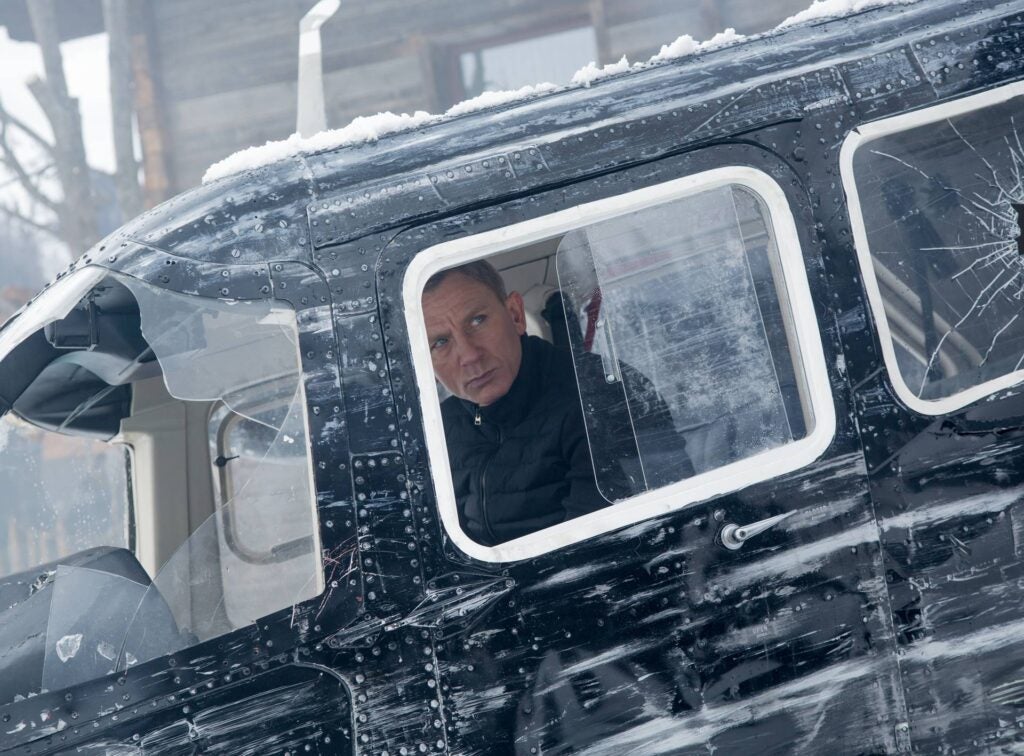
AUSTRIA
Bond’s mission takes him to Austria, where he joins forces with psychiatrist Madeleine Swann (Léa Seydoux) who works at the exclusive medical center The Hoffler Klinik. The exteriors of the clinic were shot on location at the ICE-Q restaurant at the top of the 3000-metre Gaislachkogl mountain in Sölden while the interior was created on The Richard Attenborough Stage at Pinewood Studios and posed a major challenge for van Hoytema.
“It was one of the easiest and most difficult lighting setups ever for me. It’s a glass cubicle but Barbara again allowed us to dream big, so we figured out a way to make it look real. We didn’t want a blue screen, so we literally hung a mountainscape from the ceiling all the way down. We lit it from the back. It was a crazy big rig like a rock concert. But it meant we could film 360 degrees into a very credible environment, minimising the post-production we had to do. Sometimes you want to be on the set and figure out where to go, what to do. You want to play around and this really allowed us to find the right sort of perspectives through the building. I always believe the more realism you infuse on the spot where you shoot, the less people need to imagine and the more energy they can spend in adapting to the atmosphere and move around in it freely.”
When the clinic comes under attack from Hinx and his crew, Madeleine is kidnapped and driven away. Bond gives chase in a plane, forcing the convoy to crash and spiriting Madeleine away to Tangier. The epic pursuit was captured mostly by the action unit, led by director Alexander Witt, but this didn’t stop van Hoytema from wishing he was in on the action.
“We always shoot parts of the big action sequences. In Austria, we had the second unit stay behind, this gigantic team of incredible people. Sometimes you can only do three shots a day because the shots are so complicated. If you have a plane on a wire coming down a very thin line of trees, three or four cars and explosions going off, you prep this for days and then you get one crack at the shots and then you decide if you reset or not. But that’s pretty much what you’ve been doing that shooting day. While on the first unit, you’ve got six pages of dialogue to get through on the actors’ clocks. There’s a whole different dynamic to that. I always feel there’s a missed chance with second unit. I always feel like, ‘Oh I want to stay and I want to do it’ but, unfortunately, that’s not the reality of the time you have to actually make a film.”
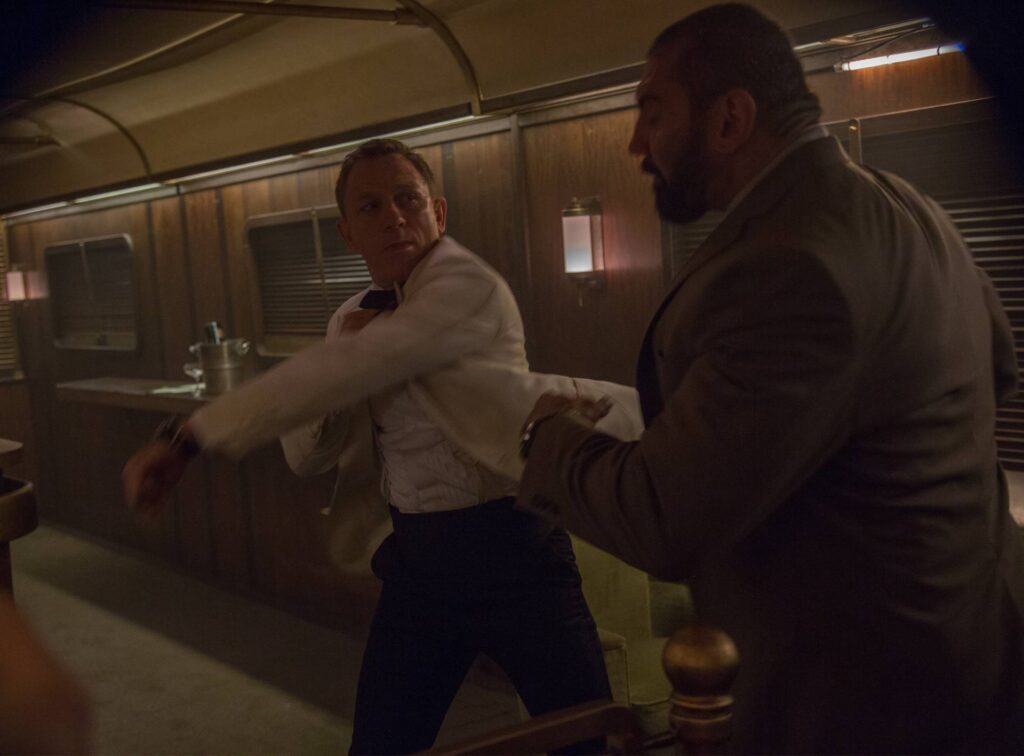
EN ROUTE TO TANGIER
On a train bound for Morocco, Bond and Madeleine get to know each other over dinner, an intimate moment interrupted by Hinx who engages Bond in a brutal fistfight through different carriages.
“This was very laborious. The problem was in the beginning of shooting the scene, Daniel got hurt and that meant he couldn’t do the things he would normally do. So that changes your way of thinking a little bit. You start working with doubles, but it restricts your freedom and in order to make it feel organic, it becomes laborious. We also didn’t want to compromise the scene in any way because of what happened to Daniel. It just was a lot more work than we anticipated. This was one of these scenes where first unit and second unit became very closely integrated. I was doing first unit in London and we were shooting, shooting and shooting. Then after 12 hours of shooting, Sam and I would go to the second unit and be there for another six hours. There was a lot of that towards the end. We were getting tired.”
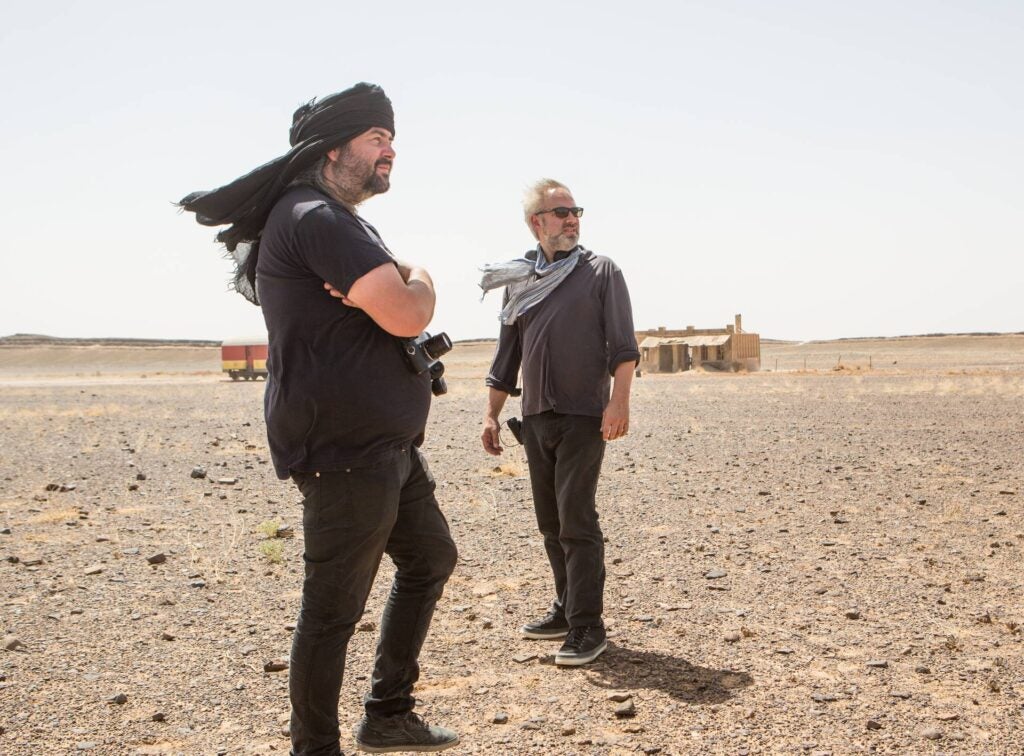
THE SAHARA
Bond and Madeleine arrive at Oberhauser’s base in the Sahara. Oberhauser quickly reveals his true colours (and identity), subjecting Bond to neurological torture, before 007 uses the Q-Dept explosive wristwatch to break free. Unlike the torture scene in Casino Royale which takes place in a dark, dank abandoned barge, this Spectre interrogation happens in a brightly lit, hazy, almost surgical room.
“I remember there was a difficult one because it’s an airy, light hospital room in the middle of a desert. It was important for the interiors to feel the Moroccan desert seeping through into that white room. [Production designer] Dennis Gassner conceptualised that room. I still wanted that feeling of scorching sun in there, almost blinding, almost a little dreamy. I just felt the interiors have to feel like the exterior deserts. Bond is awakening there and you really want to feel that you’re really in a different environment.”
While the interiors of SPECTRE HQ were shot at Pinewood, the exteriors were created at Gara Medouar, a horseshoe-shaped geological formation near Sijilmasa in the Sahara desert.
“The exterior of the base was for the most part non-existent because it was CGI. We were basically shooting on paths that led to nowhere. All the time, we had to envision, ‘Okay, the headquarters will be here’. It requires lot of imagination in order to make that work in your head. We ended up building a lot inside Pinewood Studios.”
In true 007 fashion, Bond escapes and destroys Blofeld’s lair in a huge explosion — special effects supervisor Chris Corbould employed 2,223 gallons of kerosene to fuel the huge blast.
“The explosion was very interesting, because it was huge. It was the biggest explosion I’ve ever filmed. It actually made it into the Guinness Book of World Records. It was fricking exciting to do it. It was our last thing we did in Morocco, and it was like we went out with a bang.”
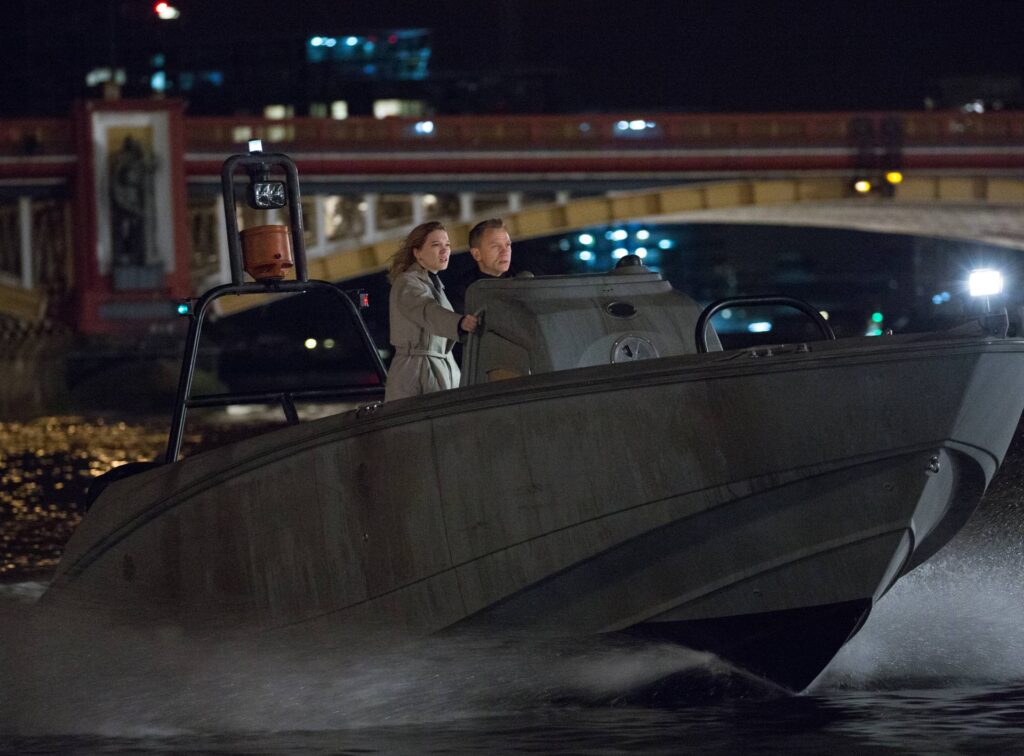
LONDON
Bond returns to London to thwart Blofeld’s planned global surveillance system Nine Eyes. The climax involves Bond chasing Blofeld’s helicopter in a speedboat down the Thames, bringing the aircraft crashing down on Westminster Bridge. The production shut down a section of the river from Lambeth Bridge to Hungerford Bridge, giving van Hoytema the daunting technical prospect of lighting a huge area at night.
“I was very scared that we wouldn’t see the helicopter. It’s so much about this interaction between Bond and the helicopter at night. I was just so panicky that it would become a CG helicopter and then it would be illuminated with some sort of light that came from nowhere. And then, of course, we’re in London, the home base, and the city is laid out around you, so you want to see that. I started lighting the sh*t out of that whole area.
“I have an incredible gaffer, Dave Smith, who helped me conceptualise it. We started prepping that scene very early. We began by exploring the access to buildings and light sources. It’s interesting because, compared to Rome, London is portrayed as a much more modern city where the street lights are more neutral. It’s important in a sequence like that to feel the space around you, to feel the magnitude, and in order to feel that magnitude, you have to light it in order to make it exist.
“There is one instance that I will never forget. Dave Smith and I went out in the centre of the Thames at magic hour and we sped all the way up to the front of Parliament. We had a dimmer board operator with an iPad with us, and we’re just floating in the middle of the Thames, and the sun is setting, getting darker. We had control over the lights around us in the city and, on some very pivotal buildings, we had some powerful lights on the roof that would just light up the night sky, so the helicopter would catch some sort of exposure there. And then we did it. It was one of the most exciting set-ups I’ve ever done.”
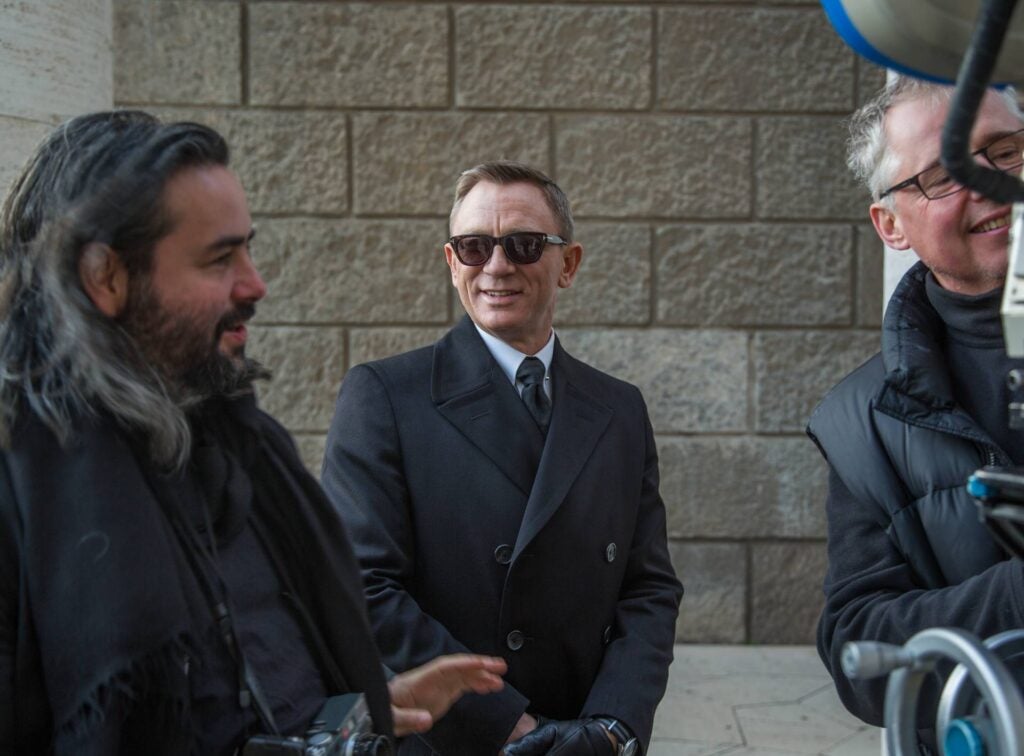
A DREAM UNLOCKED
Van Hoytema had grown up watching 007 movies (“It was always a big event, the music, the anticipation”) and was delighted that shooting Spectre lived up to his sky-high expectations.
“A James Bond film is a thing you want to have on your CV and once it’s on there, it will always be there. To me, it’s a beautiful memory, but it’s not only because it’s a nostalgic thing. I also love the idea that in this world, there are people out there like Michael and Barbara who believe in this old-school idea about what cinema could be and could mean to people. Every film is supposed to give people an experience that they take with them. To be part of that is absolutely a dream come true for me.”
